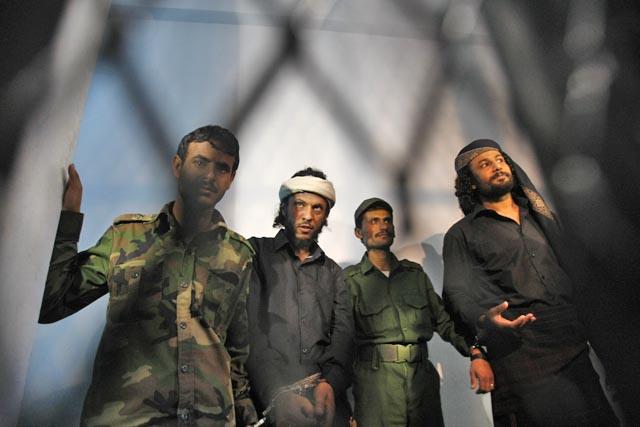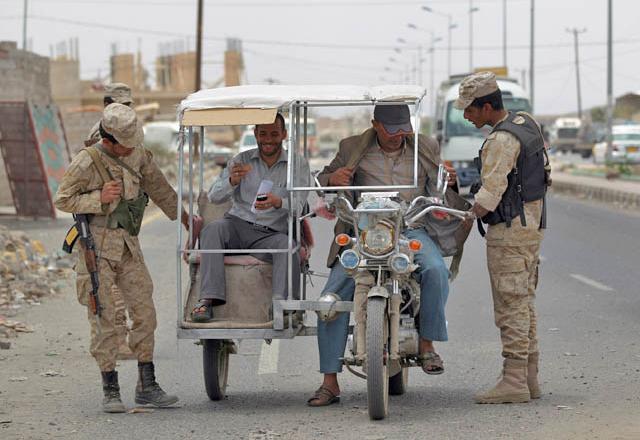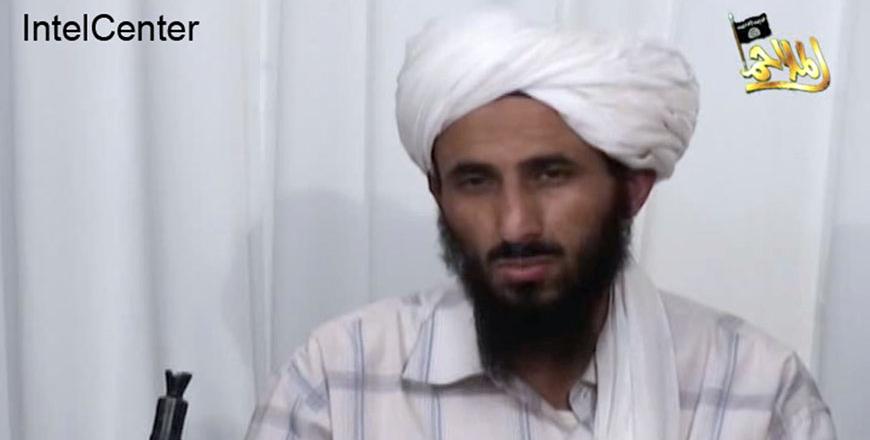You are here
Drone strikes alone will not stamp out Al Qaeda in Yemen — analysts
By Reuters - Apr 22,2014 - Last updated at Apr 22,2014

SANAA/DUBAI — An intense two days of air strikes on Al Qaeda in Yemen may have killed or wounded some of its commanders, but drones alone are unlikely to eradicate the threat the group poses to Yemenis and the West.
A weak central government, a rivalry-ridden and poorly equipped security force, endemic poverty and corruption have made Yemen the ideal haven of Al Qaeda in the Arabian Peninsula (AQAP), whom US President Barack Obama has described as the group “most active in plotting against our homeland”.
Desperate to prevent AQAP from planning more attacks like its attempt to blow up a US airliner in December 2009, Washington has used drones to kill group members and leaders.
A US national security source said on Monday that the US government believed that AQAP is currently plotting attacks against American targets, including the US embassy on Sanaa.
But analysts say drone strikes do only limited harm to AQAP.
They say the group will remain a serious menace unless the government can address challenges such as poverty and inadequate security forces, and curb the occasional civilian casualties inflicted by drone attacks that inflame anti-US sentiment.
“The US can’t simply kill its way out of the terrorism threat,” said Letta Tayler, Human Rights Watch’s senior researcher on terrorism and counter-terrorism.
“The US and other concerned nations should address all the drivers of terrorism including poverty, illiteracy, political marginalisation and lack of opportunity for young people.”
Drones will not end war
The drones’ main success has been to severely limit AQAP’s movements and ability to hold territory as it did back in 2011.
“When they move from A to B, they have to think 100 times. They’ve lost their freedom,” said Mustafa Alani, a security analyst with close ties to the Saudi interior ministry.
“It [drones] is very effective, but this is not going to deal with the problem. These people are replaceable. You can kill 10 of them and there’s 10 more in the pipeline. [So] it’s a success that won’t end the war against AQAP,” he said.
On Saturday and Sunday, several air strikes — presumed to be carried out chiefly by US drones — were launched on central and southern provinces of Yemen.
Yemen’s interior ministry said 55 militants were killed on Sunday alone, which would make it the biggest strike against Al Qaeda militants since at least 2012.
It said three of those killed were leading members of Al Qaeda. Yemen said 10 Al Qaeda militants were killed in Saturday’s attack.
A senior security source said investigations were being carried out into the identities of those killed, but confirmed that “leaders in the organisation” had died.
Rumours have been swirling that those killed include AQAP leader Nasir Al Wuhayshi and Saudi bombmaker Ibrahim Al Asiri, especially after several eyewitness reports emerged that at least one helicopter had landed after a late Sunday night strike in the restive southern Shabwa province.
Tribal sources told Reuters on Sunday that five suspected militants were killed in that attack.
“Minutes after the car [with militants] was hit, we saw helicopters hovering overhead and military cars spreading. Soldiers were seen disembarking from one of the helicopters,” said Obeid Awad.
“After they left, we found the struck car but we could not find any body parts,” he told Reuters.
Local and tribal sources over the weekend said unmanned drones had been circling for days prior to the attacks. Yemen is among a handful of countries where Washington acknowledges using drones, though it does not comment publicly on the practice.
Faris Al Saqqaf, an adviser to the Yemeni president, told Reuters that Yemeni fighter MiG-29s joined in the operation in Shabwa.
Civilian casualties, recruitment opportunities
“Drone strikes are never the solution. It is a tactical band-aid but it can be quite an important one if you don’t want to see planes dropping from the sky in the West,” said Magnus Ranstorp, a terrorism expert at the Swedish National Defence College.
Yemeni President Abd Rabbu Mansour Hadi praised the anti-terrorism unit in Yemen’s special forces for their strike in Shabwa, which he said targeted “dangerous leading elements of Al Qaeda” and described the operation as one “that represents a strong message to the elements of evil and terrorism”.
But the use of drone strikes has inevitably meant that civilian casualties are sometimes inflicted.
The government acknowledged that three civilians were killed in the air strike on Saturday in the central al-Bayda province. That same province was the site of a controversial strike in December in which security officials said 15 people on their way to a wedding were killed.
Yemeni political scientist Abdulghani Al Iryani points to the sharp increase in the number of Al Qaeda elements from when the drone campaign started in 2003, when they were a few hundred to the several thousand they are believed to be today.
“There are many reasons for the increase of membership of Al Qaeda, but we cannot rule out that the use of drones and the popular backlash it produced has increased the recruitment opportunities of Al Qaeda,” Iryani told Reuters.
“The fact that both the Yemeni and the US governments have relied too heavily on the use of drones as an expedient way to postpone the resolution of the problem rather than having a proper, comprehensive approach to the problem, has contributed to the expansion of Al Qaeda in Yemen,” he said.
Recipe for disaster
Yemen said the attacks were carried out after intelligence that the militants were planning attacks on “vital civil and military and installations”.
Underscoring the threat militants still poses against security forces in the country, police sources said on Monday the head of Sanaa’s police survived an assassination attempt, while one of his aides was killed by armed men. This came hours after an intelligence officer was killed and an aide to the manager of Sanaa’s airport.
The appearance of an online video a month ago in which Wuhayshi appears brazenly with hundreds of other fighters, vowing to attack the United States while celebrating the escape of Al Qaeda prisoners from Sanaa’s central prison, may have helped provide some clues.
Saqqaf, the president’s adviser, described the video as “provocative” and said it showed the location in which Al Qaeda elements were present.
But the army’s weaknesses in providing security in swathes of the country helps gives AQAP more freedom, making drones “an easy option to attack specific targets in a timely manner”, said Charles Lister, a visiting fellow at the Brookings Doha Centre.
“But the lack of on-the-ground military presence means a lack of localised intelligence, which by extension means strikes have inevitably struck civilian targets on occasion. In a deeply tribal and conservative society, such incidents are a recipe for disaster,” he said.
“While a drone strike might represent one step forward, more often than not, it also means two steps back.”
Related Articles
A drone strike killed six Al Qaeda suspects in eastern Yemen on Monday, the first such raid since government troops launched their biggest offensive on jihadists in two years, tribesmen said.
DUBAI — Al Qaeda confirmed that its second-in-command and the head of its powerful Yemeni branch was killed in a US drone strike, in the hea
A drone strike Saturday killed 15 Al Qaeda suspects and three civilians in Yemen’s central Baida province, a stronghold of the extremist group, a security official said.



















